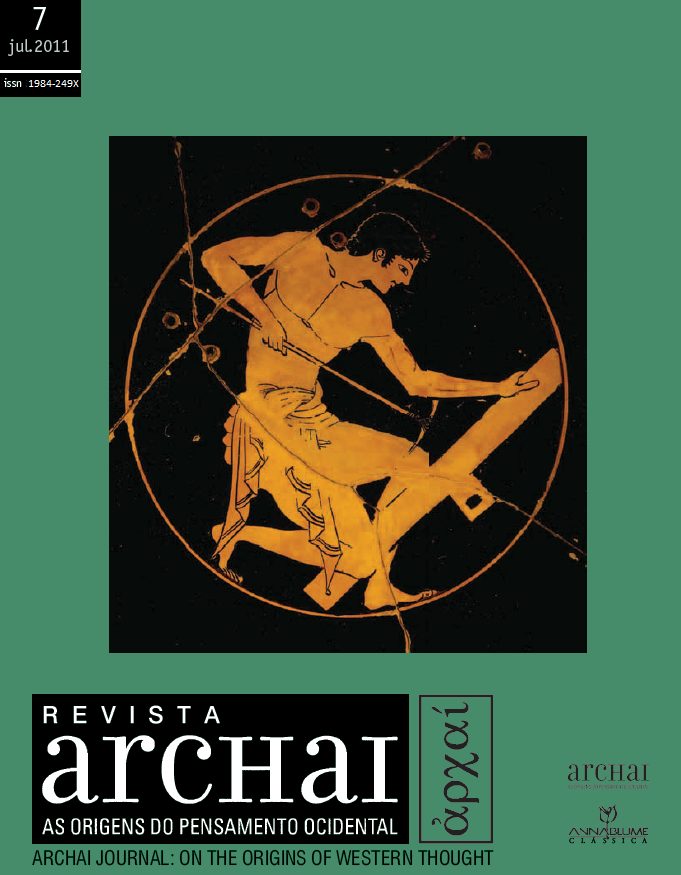Antígona contra o sofista
Keywords:
Antígona, Sófocles, Protágoras, Nomos, RelativismoAbstract
O objetivo deste artigo é mostrar que uma interpretação correta da Antígona de Sófocles tem que levar em conta também os seus pontos polêmicos. Mais precisamente, uma comparação com Protágoras pode provar-se útil. Na verdade, o principal motivo de desacordo entre Antígona e Creonte não se refere tanto à oposição entre a família e o Estado como duas abordagens distintas da realidade e do ser humano. Antígona, por um lado, defende um mundo regido por leis divinas, cujo significado pode escapar à compreensão humana, mas que, apesar disso, os homens respeitam. Creonte, por outro lado, enfatiza a capacidade política que permite aos seres humanos criarem um mundo humano para nele virem. Esta visão claramente faz recordar o humanismo e o relativismo de Protágoras, uma filosofia bem conhecida na Atenas do V século a.C. Mas o problema para Sófocles é que um mundo no qual o homem é a única medida corre o risco de se tornar um mundo sem medida ou, pior ainda, um mundo com a força sendo a única medida, assim como o exempo de Creonte se mostrará na segunda parte da tragédia.
Downloads
Downloads
Published
How to Cite
Issue
Section
License
Given the public access policy of the journal, the use of the published texts is free, with the obligation of recognizing the original authorship and the first publication in this journal. The authors of the published contributions are entirely and exclusively responsible for their contents.
1. The authors authorize the publication of the article in this journal.
2. The authors guarantee that the contribution is original, and take full responsibility for its content in case of impugnation by third parties.
3. The authors guarantee that the contribution is not under evaluation in another journal.
4. The authors keep the copyright and convey to the journal the right of first publication, the work being licensed under a Creative Commons Attribution License-BY.
5. The authors are allowed and stimulated to publicize and distribute their work on-line after the publication in the journal.
6. The authors of the approved works authorize the journal to distribute their content, after publication, for reproduction in content indexes, virtual libraries and similars.
7. The editors reserve the right to make adjustments to the text and to adequate the article to the editorial rules of the journal.



